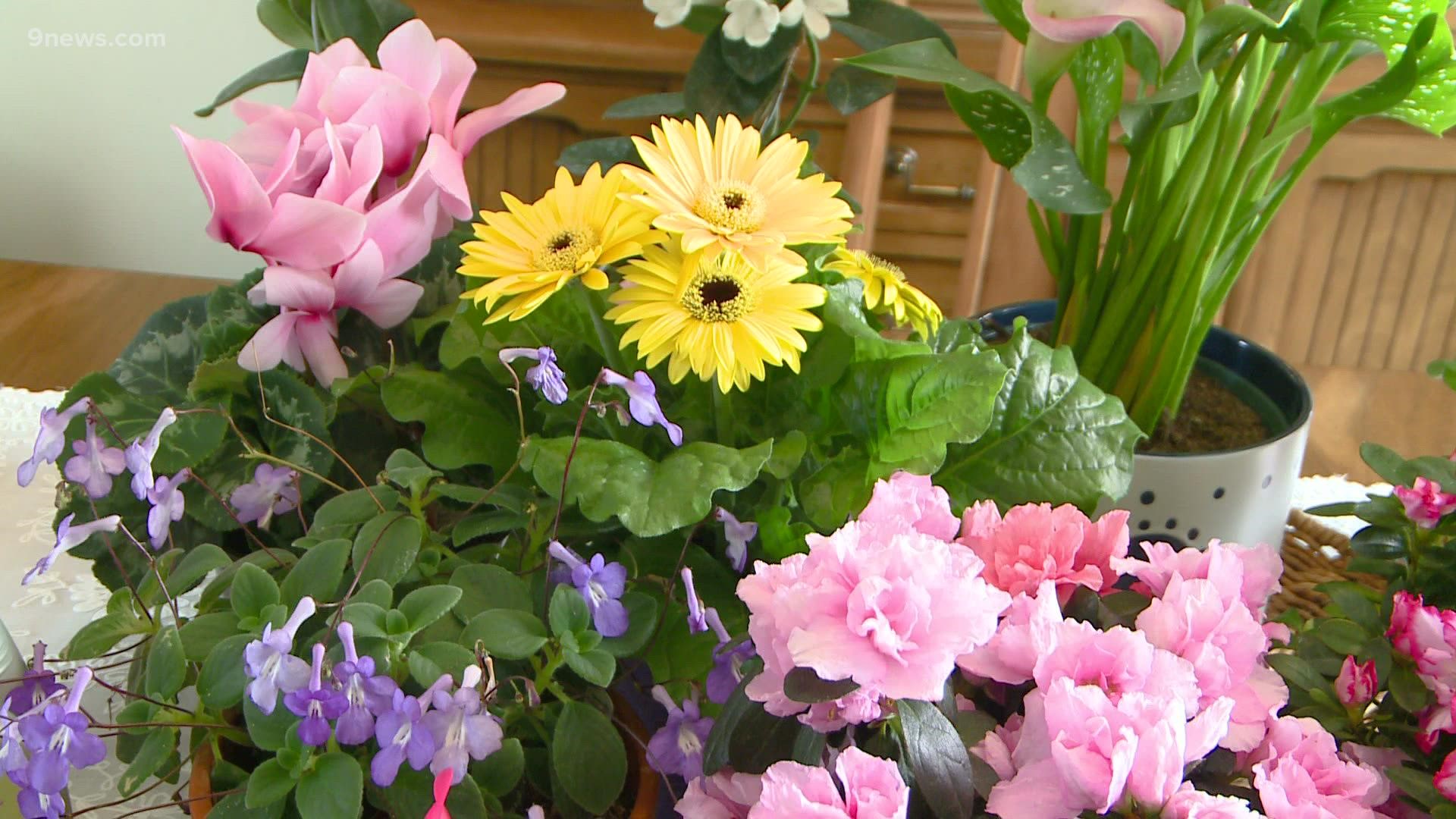COLORADO, USA — I’m hoping post Valentine’s Day that you received or treated yourself to blooming indoor plants. What a perfect way to add color to your indoor spaces, especially in time for the next snowstorm.
Just like your outdoor blooming plants, indoor blooming plants require more light. An east window would be perfect, but a bright space is what you are after. However, don’t allow the intense sun from a south or west window shine directly on these plants. The window acts like a magnifying glass and you will fry your plants. Again, bright but not direct.
Water the plants deeply, which means water until you see excess water drain from the bottom of the plant, pooling in the drip saucer below. If you’ve chosen a pot without a drainage hole, don’t let the excess water list at the base of the plant, that will cause root rot. Drain that excess water out. You’re after lightly moist soil, not a bog.
Deadhead or pinch off blooms once they start to wilt to dry out so the plant will put energy into producing more blooms. Also remove any damaged or dead foliage as needed.
Unfortunately, bad bugs like spider mites, aphids and mealy bugs are attracted to these beautiful blooms as well. Proper care will help reduce the chances of these insects moving in but have a few items on stand-by so you can take care of any infestations immediately.
Neem Oil comes from the Neem tree which is a very versatile plant native to India and Asia. This oil is very effective in fighting aphids, mealybugs, fungus gnats and whiteflies. There are some plants that are sensitive to Neem Oil so test a small area before spraying your entire plant. Neem Oil can be sprayed directly on to plants and insects or sprayed on to the soil to fight fungus gnats. Use this once a week until you don’t see any more insect problems.
Dr. Bronner’s Soap is a staple in my arsenal of insect fighting concoctions. It’s completely organic, smells good and is safe to use around people and pets. This soap breaks down the outer coating of the offending insects which causes them to die of dehydration. Sorry, that sounds so brutal. This is safe to use on any edible plants without fear of ingesting any chemicals.
Mix 1 Tbsp of soap with water in a clean spray bottle. Agitate the bottle a little but don’t shake it. Apply this insecticidal soap in a heavy coating and repeat once a week until you don’t see any more insects on your plants. You can also mix in a ½ tsp of cinnamon or red cayenne pepper to deter future infestations.
Mosquito Bits will kill any insect larvae and is very quick acting. You can either lightly sprinkle the bits on the soil or make a tea by soaking the bits in water before you water your plants.
Diluted rubbing alcohol and a q-tip may be a test of patience and focus, but it is how I fight the mealybugs that have invaded my coleus cuttings and some succulents in my greenhouse. Dip the q-tip into the diluted rubbing alcohol mixture and lightly roll the mealybug off the plant. These are the insects that gross me out the most.
Because our water is very alkaline you will start to see water spots on the leaves of your houseplants. As much as possible, water the soil, not the leaves. The spots are easily removed with Leaf Shine. Follow the directions and only apply the product to the top of the leaves.
If you purchase your plants on a cold day, please protect them with plastic or paper before taking them outside. Houseplants are very susceptible to cold, and you can damage them even in the short trip from the warm garden center to your car and then into your house.
Specific plants from this segment:
- Cyclamen prefer a cooler room, they do very well in Rob’s old Victorian home.
- Gerber Daisies just scream SPRING so I had to have them and I chose the bright yellow…my favorite color. A bright, sunny room will keep these plants blooming until you can move them into your garden in the summer.
- Calla Lilies have so much meaning. “Calla” is Greek for beautiful and is a popular flower in bridal bouquets. Calla lilies will not tolerate being dry and prefer a warmer spot in your home, but again, not in direct sunlight from a window. This is another flowering plant that you can move outside in the summer.
- Stephanotis has a strongly perfumed white flower which is popular in wedding bouquets.
- Azaleas prefer a cooler location out of direct sun but in a bright room and never let them dry out. These can be the fussiest of indoor blooming plants so if you are houseplant newbie perhaps choose a plant that is more user friendly.
- Cape Violet have clusters of purple trumpet-shaped blooms. Older leaves will shrivel and turn brown but that’s normal. This plant will continue to bloom but it needs a bright room.
If your green thumb is getting bored or you need some much-needed color in your life when spring seems too far away, add attractive and elegant blooming houseplants to your space.
More Proctor's Garden:
> Top stories curated daily just for you! Sign up for the 9NEWSLETTER to get can’t-miss stories, Next and Broncos content, weather and more delivered right to your inbox.
SUGGESTED VIDEOS: 9NEWS Mornings

